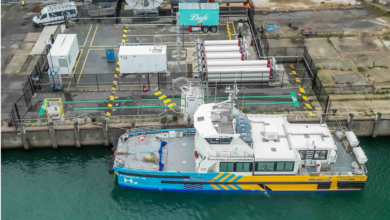The Port of Tallinn and the Port of Gdynia Authority to cooperate on hydrogen
Hydrogen will help the Port of Tallinn create new value chains and economic opportunities and, in doing so, reach carbon neutrality.

The Port of Tallinn and the Port of Gdynia Authority SA have signed a letter of intent to cooperate in hydrogen management.
The aim of the cooperation is the will of joint implementation of projects related to the production, storage and distribution of “green” hydrogen and the use of zero-emission fuels in creating added value in logistics supply chains of goods and services, as well as the exchange of information on innovative development projects related to the use of zero-emission fuels for seaports and the broader maritime economy.
Ports are strongly committed to developing a low and zero-carbon economy. The Port of Tallinn has a hydrogen strategy with plans to implement projects related to producing and distributing green hydrogen for use in the wider maritime industry.
Both the Port of Tallinn and the Port of Gdynia aim to jointly implement projects in the production, distribution and storage of “green” hydrogen and want to create added value in logistic supply chains of goods and services.
The development of hydrogen and zero-carbon economy also includes the uptake of ammonia and methanol as dedicated fuels for the maritime industry.
Zero emissions at the Ports include an ecological aspect, meeting increasingly stringent environmental standards and potential diversification of fuel sources. These activities have a strategic dimension for the entire fuel and energy industry.
Seaports show potential as places to animate activities related to the initial stage of development of the hydrogen economy since they serve various modes of transport associated with the handling of cargo and passengers.
Valdo Kalm, CEO of the Port of Tallinn, said, “The Port of Gdynia is the initiator of activities related to establishing a hydrogen hub in the Port of Gdynia, which will serve the purpose of decarbonization of port terminals. In particular, using hydrogen to power the equipment and devices, production and storage of “green” hydrogen in the close area of the port, as well as the use of hydrogen and other zero-emission fuels (ammonia, methanol) to propel vessels calling at the Port of Gdynia.”
